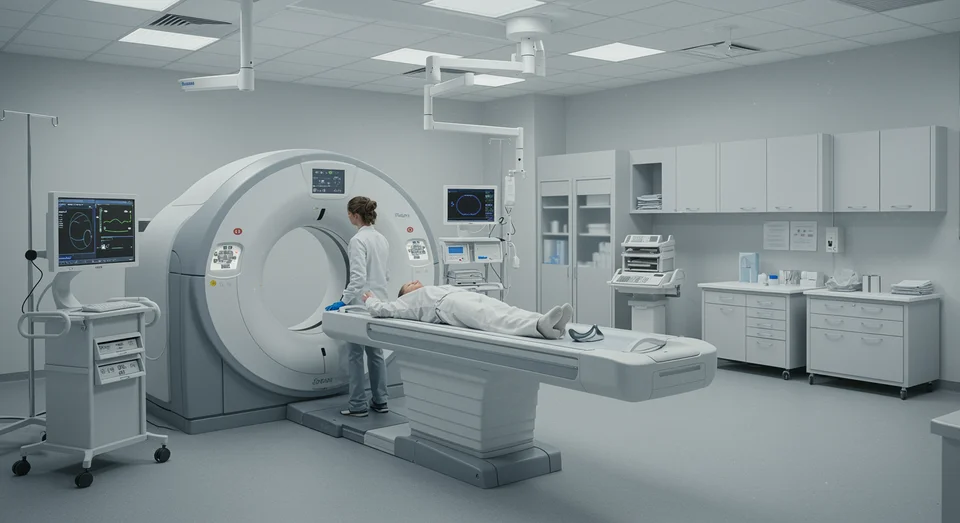CT Scans Linked to 103,000 Future Cancer Cases, JAMA Internal Medicine Study Warns
220 views
A sobering study published in JAMA Internal Medicine has cast a stark light on the unintended consequences of one of modern medicine’s most indispensable diagnostic tools: computed tomography (CT) scans. With 93 million scans performed on 62 million individuals in 2023 alone, researchers estimate that these procedures could be responsible for 103,000 future cancer cases—approximately 5% of the annual cancer diagnoses in the United States. The findings highlight a growing tension between the life-saving capabilities of CT imaging and its potential long-term health risks, underscoring the need for a more nuanced approach to its use.

The Double-Edged Sword of CT Imaging: Balancing Precision and Risk
CT scans have revolutionized medical diagnostics, offering unparalleled precision in identifying internal injuries, tumors, and other conditions. Yet, their reliance on ionizing radiation—a known carcinogen—has sparked concerns about their role in contributing to cancer development. The study identified lung and colon cancers as the most common malignancies linked to CT scans, with scans of the abdomen and pelvis accounting for the highest proportion of estimated cases. This revelation places CT imaging alongside obesity and alcohol consumption as significant but often overlooked cancer risk factors.
The researchers emphasized the importance of ensuring that every scan is medically justified and performed with optimized radiation doses to mitigate risks. However, the complexities of assessing long-term effects remain steeped in uncertainty. Much of the risk modeling for CT-related cancers stems from data on atomic bomb survivors and individuals exposed to radiation in occupational settings—contexts vastly different from the controlled environment of medical imaging. As such, while the study provides a crucial framework for understanding the potential risks, it also underscores the limitations of extrapolating data from these disparate scenarios.
The implications of these findings are profound, not only for patients but also for healthcare providers tasked with navigating the delicate balance between diagnostic necessity and risk minimization. CT scans are often the quickest and most effective way to diagnose life-threatening conditions, but the growing awareness of their potential to contribute to future cancer cases raises pressing ethical and clinical questions. Should physicians rely on alternative imaging methods, such as MRI or ultrasound, in cases where radiation exposure might be avoidable? Or does the immediate benefit of a CT scan outweigh the distant possibility of harm? These dilemmas are further compounded by the fact that radiation doses can vary significantly between institutions, suggesting that standardization and stricter guidelines could play a pivotal role in reducing unnecessary exposure.
Beyond the clinical sphere, the study’s findings invite a broader societal reflection on the trade-offs inherent in technological advancements. CT scans epitomize the marvels of modern medicine, yet their widespread use has inadvertently introduced a new layer of risk to public health. This paradox is emblematic of the challenges posed by many medical interventions: while they offer immense benefits, they also demand careful stewardship to prevent unintended consequences. The researchers’ call for judicious use and optimized radiation doses is a reminder that even the most advanced tools are not immune to the need for restraint and critical evaluation.
As healthcare systems grapple with the implications of this study, the conversation around CT imaging is likely to evolve. Efforts to develop lower-radiation technologies, refine risk assessment models, and educate both physicians and patients about the potential dangers will undoubtedly gain momentum. For patients, the findings serve as a reminder to engage in informed discussions with their healthcare providers about the necessity and safety of recommended scans. For policymakers and medical institutions, the study is a clarion call to prioritize innovation and regulation that minimizes harm without compromising diagnostic efficacy.
The tension between progress and prudence is a familiar narrative in the story of human innovation, and CT scans are no exception. As the medical community continues to wrestle with the dual realities of their indispensability and potential hazards, one thing remains clear: the pursuit of better health must always be accompanied by a commitment to safeguarding it for the future.
